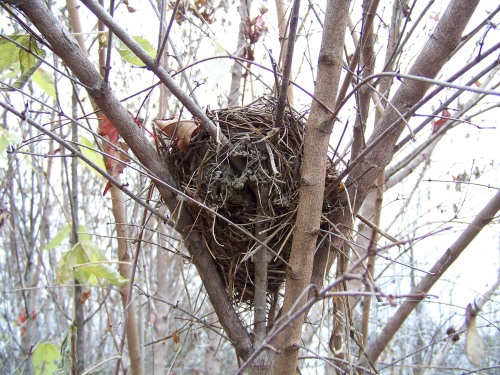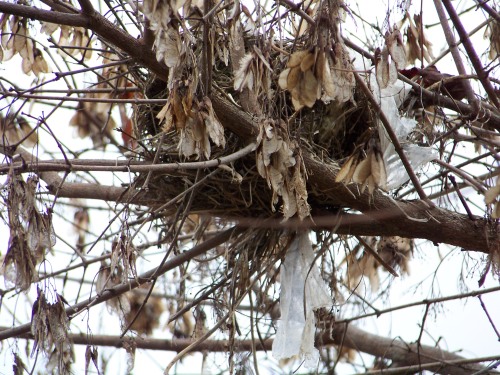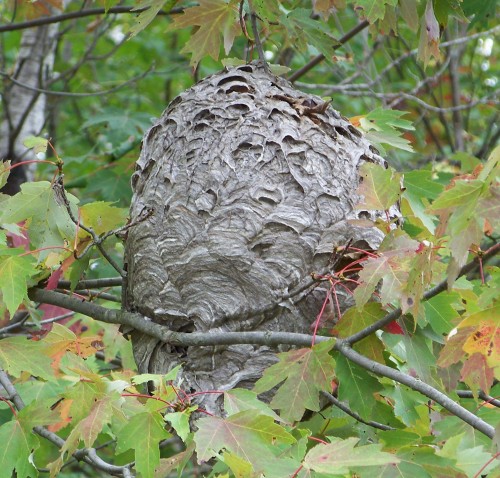
Once the trees drop their leaves, the nurseries that cradled the year’s bounty of baby birds are suddenly revealed. It’s amazing how well-concealed nests are during the summer. Of course, if you pay close attention to the actions of birds, and know where to look, it is possible to find their nests while they are active. However, I have been content to let the birds live their lives in my yard without my scrutinizing of their comings and goings to closely. Consequently, I have daily walked right past nests without knowing they were present until the fall.

Many American Robins (Turdus migratorius) build their nests close to our house in trees and hedges bordering the lawn and driveway. Robin nests are among the easiest nests to identify in the fall. Robins construct very sturdy nests, weaving grasses into a cup and plastering the walls with mud. They are the only builders of cup-shaped nest to employ mud in this fashion, so dried-mud is a pretty sure sign that you are looking at a robin’s nest. The nest pictured at the top of the post was built in a hawthorn tree. The nests above and below are further examples of robin architecture.

The robin who built the nest below included some twine in the construction.

This nest, located in a Amur Maple tree, features a strip of torn plastic. The mud isn’t conspicuous, but I got out the ladder and climbed up to take a closer look. Sure enough, the mud rim can readily be observed. For more on robin nests, see Robin’s Egg Blues.


Another readily-identifiable nest to be found in the bare tree branches is that of the Baltimore Oriole (Icterus galbula). Orioles weave a hanging basket that is typically secured at the rim or edges to a drooping branch. It is woven with various plant fibres and lined with fine grass, hair or plant down. The nests often hang in branches over roads, an adaptation, perhaps, of an instinct to build the nest over flowing water. The nests quickly become weather-worn once the trees lose their leaves.

Many nests are difficult to identify once their occupants have departed. Here is a nest with a scenic situation over water. It may have been built by an Eastern Kingbird (Tyrannus tyrannus). Kingbirds like to nest on a horizontal tree limb, about halfway between the tree trunk and its canopy. About 25 % of the time, the nest is located over water. Kingbirds build a bulky, untidy nest using weed stems, grass, plant down and rootlets.

The nest below is likely that of an American Goldfinch (Carduelis tristis). Goldfinches prefer to build their tightly-woven nest in a branch fork. Caterpillar webbing and spider silk is often used to bind the outer rim of the nest.


The builder of this large nest, over a foot across and high up in a larch tree, remains a mystery.

Not all the nest-builders were birds. This nest, possible belonging to Bald-faced Hornets (Dolichovespula maculata), has already started to disintegrate.




